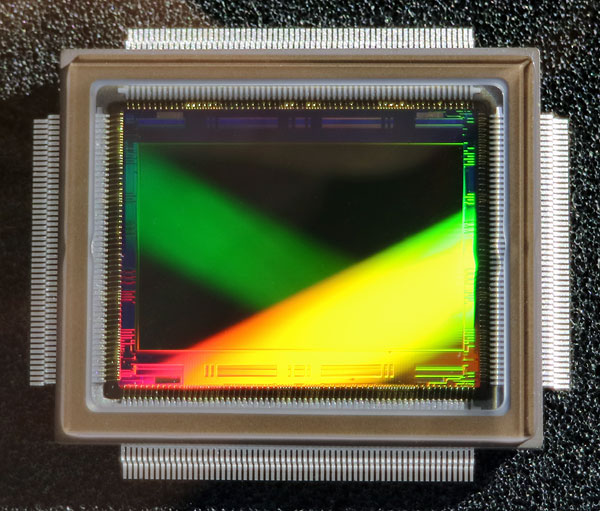Canon Q&A: Imaging chief promises EOS-M for enthusiasts, more and better APS-C lenses, and new printers “in the very near future”
posted Wednesday, September 16, 2015 at 10:26 AM EST
I had the opportunity to sit down at last week's Canon Expo 2015 show with Mr. Masaya Maeda, the Senior Managing Director and Chief Executive of Canon Inc's Image Communication Products Operations. Bottom line, within Canon, he's the person most responsible for setting future directions for camera and lens technology.
It was quite a conversation; Mr. Maeda was unusually forthcoming about Canon's plans and overall direction. While my questions didn't involve very specific product plans (I know better than to bother asking those by now), I was nonetheless surprised by how clear a picture I came away with, of Canon's direction in several key areas. Read on for the details below; there's a lot here of interest to IR readers.
Interview with Masaya Maeda, Canon Inc.
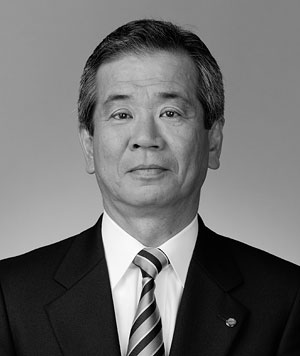
Senior Managing Director, Chief Executive Image Communication Products Operations Canon Inc.
Dave Etchells/Imaging Resource: My first question is one of corporate direction. I recall back in Expo 2005, I think, nearly ten years ago now, Mr. Mitarai [now Chairman and CEO of Canon Inc., but at the time President and CEO] identified medical technology as a key strategic area for Canon, and you’ve made enormous progress on that -- we can see here now. Has the heavy investment in medical technology impacted the R&D budgets for still cameras, though? You've also obviously been putting a lot of investment into the cinema and video products. Has the R&D investment in your traditional camera products -- DSLR and compacts -- has it stayed level, gone up, or gone down in the last five years?
Masaya Maeda/Canon Inc.: Regarding the R&D budget, basically the budget has been flat, except to say that from last year to this year, there had been a slight increase to cover all the costs for exhibits for this Expo 2015.
DE: Oh, so you invested a bit more in R&D, to have exhibits here. Yes...
MM: Regarding medical imaging, we feel that we are contributing to the medical group, not through providing money, but through our camera technology.
DE: One trend that’s obviously been very apparent is the increase in resolution; actually back at Canon Expo 2010, we saw the 50-megapixel sensor, and now we see at this Expo... so the 50-megapixel sensor came to market as the Canon EOS 5D and 5DS. But now we see 120 megapixel and 250 megapixel sensors on display, and we’ve seen you reworking many of your classic lens designs over the past couple of years to improve their performance. How much more work do you think you still need to do in that process, particularly in light of seeing the 120-megapixel SLR that looked fairly close to being a product here?
MM: Regarding the EF lens series, that is already able to deal with 50 megapixels or with 8K [video capture; 33.2 megapixels with a 16:9 aspect ratio]. However, the performance of lenses is something that is very analog, and therefore there are minute differences in how the color changes or how the actual image is shown, and so I think that based on user needs, we will continue to work to improve them. Now, for example, our recent product, 35MM: F/1.4, we apply the new material to reduce color...
DE: ...chromatic aberration.
MM: Yes, yes. Step by step, we are going to improve our lens performance.
DE: So it’s an ongoing process; currently the lenses are capable of the 50-megapixel and 8K level, yes. My next question is also on lenses. It seems significant to us that Canon has developed a total of 28 EF or EF-S lenses since 2010 (if I counted correctly) but only eight of those have been EF-S models. Does that indicate a long term corporate direction that will emphasize full-frame platforms over APS-C and smaller?
MM: The digital cameras -- especially those with interchangeable lenses -- the performance of cameras has been going up a lot and therefore, together with the camera, we have to improve the image quality, and that is why we have been working on improving our L-series lenses.
DE: Yes.
MM: So going forward we will proactively, and let me emphasize that -- proactively -- work on expanding our lineup of EF-S or EF-M lenses.
[Ed. note: This is significant; Mr. Maeda was quite forceful on this point. Having made major revisions in their L-series lenses, it seems that we can expect to see significant development in Canon's EF-S and EF-M lenses going forward.]
DE: Yes. So the L-series was a priority because that was where the demand is, and the professionals demanded it.
MM: Exactly, yes. I like the red line. <laughs>
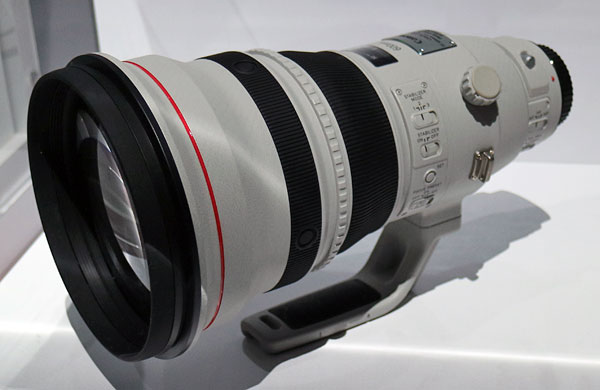
DE: The red line, yes. <laughs> You like the red line. I like the red line, too!
[Ed. note: Canon's L-series professional lenses have long been distinguished by a distinctive red line around the barrel.]
MM: Recently, our printers have the same red line.
DE: Yes!
MM: Did you see it?
DE: Yes, yes. I saw it. That’s a new branding -- so red will mean professional everywhere, yeah. I’m very interested in seeing what comes with the printers.
[Ed. note: Based on what I saw at the show, Canon is apparently close to announcing a new line of professional-level inkjet printers, which will take design and branding cues from Canon's cameras and lenses. The new printers have a black finish very reminiscent of their cameras, and a red line around them, mimicking the red line seen on their L-series lenses.]
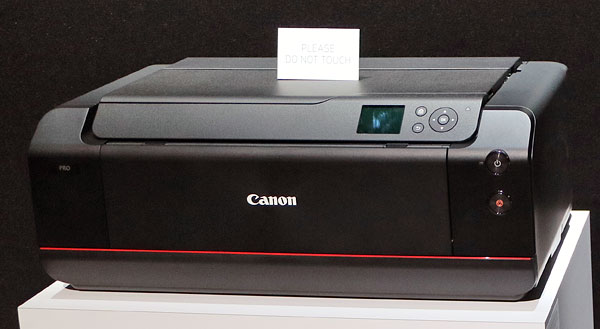
DE: This is actually a very technical question. I’m not sure if it’s one that you would be free to answer or not, but with sensor technology some have pointed to the analog-to-digital conversion implementations being very critical for image quality and dynamic range. Can you tell us whether Canon currently uses on-chip or off-chip A/D converters?
MM: Right now, we use both on-chip and off-chip, but recently I made the decision going forward to concentrate on the on-chip.
DE: Mm-hmm. Yes.
MM: The intent is to increase the performance. In terms of cost, this may be a little negative, but in terms of the direction to take, this will make us more competitive.
DE: So the net cost, the combined cost of the sensor and separate A/D is less than a sensor with A/D on it. Ah, I didn’t realize that!
[This is quite significant, and it's interesting that it was Mr. Maeda's decision to move to on-sensor A/D across the board. Some have pointed to the use of off-chip A/D converters as contributing to lower dynamic range numbers for Canon sensors, when compared to those of Nikon and others in tests such as those published on DxOMark.com. Because separate A/D converters require transmitting analog signals from the image sensor to the converter, more electrical noise can enter the signal chain, resuting in higher noise floors. On-sensor A/D also enables massive parallelism in the A/D conversion, and thereby higher frame rates and possibly lower rolling shutter artifacts. There was some speculation that Canon was locked out of this technology by patents held by Sony and others. Whether through unrelated technology or licensing agreements, it appears that this in fact isn't a limitation, or at least isn't one any longer. It's hard to say whether this will mean improved signal to noise ratios in Canon's cameras, but it certainly can't hurt, and this is the first time I've gotten a direct answer to that question from any Canon executive.]
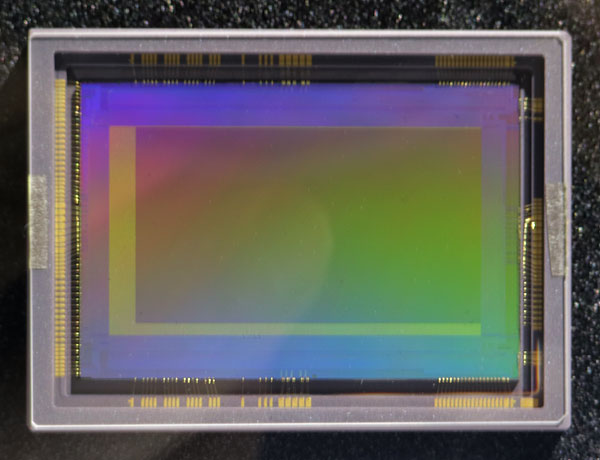
DE: Also on sensors, as far as I know, Canon has so far made all of its own sensors for use in DSLRs. I’m not sure about the early days, but I think that is true since the CMOS era. But Canon has used other companies’ sensors in its PowerShot models, in particular I think the Canon G7X and Canon G3X use Sony sensors. Backside illumination seems like a very key sensor technology for improving low-light performance, but I believe Canon may be blocked from using it in your own sensors by patent issues. I guess one question is: Is that true? And the second is: Does that make it more likely that we’ll see third-party sensors in Canon DSLRs in the near future? If not, and if you are in fact blocked from the backside technology, how will you continue to compete on high ISO image quality?
MM: First of all, for those cameras with interchangeable lenses, the sensors are all Canon-made sensors. However, as you say, for compact cameras we use both in house-made sensors and external vendor sensors. As to whether to use the third-party vendors’ sensors or not, naturally what we are aiming for is to make a very good camera, so if we determine that a better camera can be made using a third party-made sensor, there’s a possibility that we’ll use such sensors.
DE: Yes.
MM: Because our ultimate goal is not to make a good sensor...
DE: ...but a good camera. Yeah.
[This seems like another key point. Some had feared that Canon's camera efforts might be constrained by their sensor technology at some point. At least officially, that seems not to be the case.]
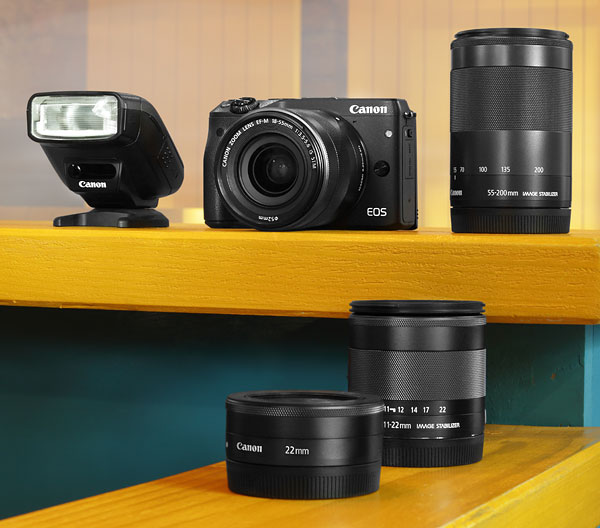
DE: Talking for a moment about mirrorless, so far Canon has made a fairly limited entry into that world, although we did just receive -- and I have in my bag -- the EOS M3 with mumber of lenses. But there's still a fairly limited range of EF-M lenses. Mirrorless is gaining popularity now even in the US; I think NPD -- the market research firm -- reported that US mirrorless camera sales rose 16.5% in 2014, while DSLR sales dropped about 15%. What is Canon’s strategy relative to mirrorless, and are you in any danger of being left behind in that market? Many competitors have not just a range of bodies, but a very large collection of lenses for them, as well.
MM: As I mentioned before when I talked about lenses, for all of the products, we are working from the top of the pyramid. Going forward, and this would be a repeat of what I said before, but we will put more effort into mirrorless, and also, naturally, we will continue to expand the EF-M lens group. In the very near future, I think that Canon will come out with a mirrorless camera that you would really like.
MM: I promise.
DE: Oh, hmm. In the near future. That’s good. That will get a lot of attention, yes. <laughs> I know better than to ask you when, so I won’t. That’s actually very interesting!
[This is very interesting indeed. While the EOS-M3 only recently came to the US, it sounds like a significantly more capable M4 may not be too far in the future. Mr. Maeda's particularly emphasis that I would like it suggests it will be a model aimed particularly at the enthusiast market. We wonder what features it might include; improved AF seems like a must-have.]
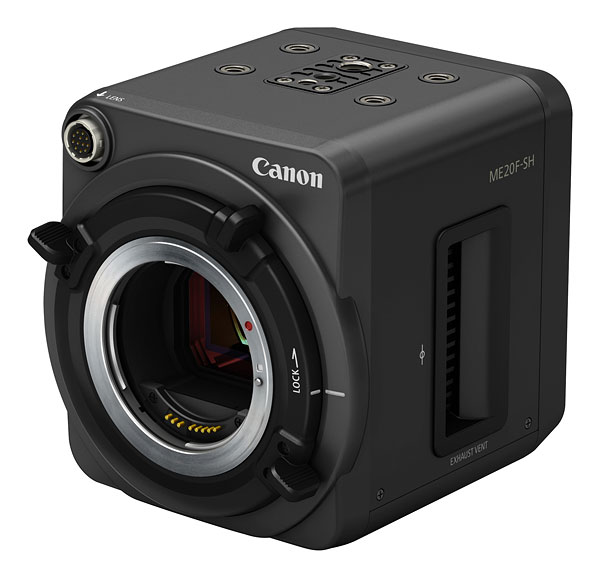
DE: This is a question about educating consumers. There are a couple of areas in which I think technology development is especially important to both consumer and professional users, and those are low-light image quality and autofocus.
Taking low-light first, you just released the extremely high sensitivity video camera, with sensitivity up to ISO 4,000,000, and the ability to capture color video in light levels of just 0.0005 lux. That’s obviously very specialized, but for consumers wanting to take pictures after dark, high ISO performance is very important. But low-light performance is also very much about pixel size, and most consumers really would be better served by fewer, larger pixels. Unfortunately, consumers like megapixels. You know, if 12 megapixels is good, 20 megapixels is better, and 50 megapixels is better still [in the mind of the consumer]. I think you’d have a very hard time selling even a 12-megapixel DSLR these days. What do you do when consumers’ desires or perceptions are really in conflict with how they would actually like to use their cameras?
MM: Well, to get to the conclusion first, the needs of the general users, the consumers, there are many different balance points. We feel that many of these consumers want to take photographs of moving objects, and therefore we want to go with a reasonable number of pixels and increase the sensitivity. However, recently when we came out with the EOS 5DS, with 50 megapixels, we found out that there were many consumers who really needed a lot of pixels. So going forward, since pixels and sensitivity are in conflict with each other, we will have to come out with what would be the good balance between the two, in order to meet the needs of various users.
So let me ask you, Etchells-san, it's my question...
DE: Okay. Your turn. You have to publish it on your website, though. <much laughter>
MM: What is your need or preference in terms of higher pixel numbers or a higher sensitivity?
DE: Hmm, that's a fair question. I kind of want both, too. So maybe two cameras, but most of the time I don’t do a lot of fine-art photography where I'd feel the need for a lot of resolution. My shots are honestly more just snapshots and things these days. And more often, I wish that I had cleaner images at very high ISO -- so available light in a restaurant, out after dark -- more often I want that than a lot of megapixels. But on the other hand, if I’m on vacation and shooting landscapes, I want lots of pixels then. If I had to choose just one, though, I would maybe have a 12-megapixel camera with very big pixels.
MM: That is very nice. Please buy both. <laughter>
DE: Buy both, yes. <laughs>
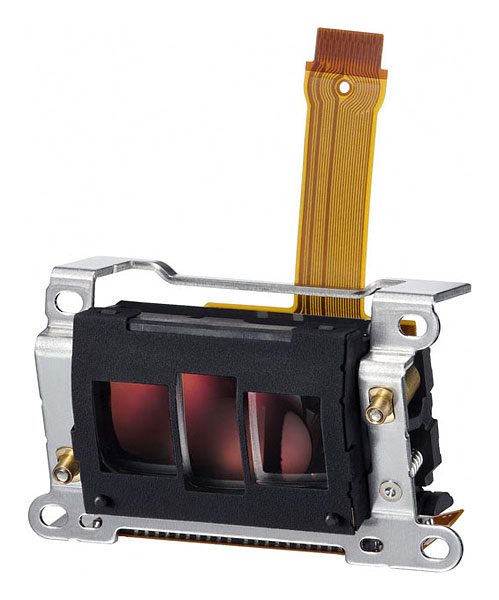
DE: So the other really critical area of technology is autofocus, and mirrorless cameras have caught up a lot, but we've found that -- short of a camera like the Canon EOS-1D X, which has fantastic autofocus -- even DSLR autofocus performance is often lacking. What are the barriers to bringing the level of autofocus performance that’s in the 1D X down into consumer cameras? In other words, what is it that makes that level of capability for autofocus too expensive to include in lower-end models? As technology advances, will that cost come down or will there always be a separation?
MM: I myself would like to have the 1D X technology in the consumer-level products. The major issue is... Of course, cost is also a factor, but the major issue is downsizing, which is very difficult.
DE: Oh, it’s hard to shrink that capability of autofocus.
MM: I hate the size of 1D X.
DE: Yes. It’s big. An incredible camera, but you have to use weights to work out your arms. <laughs> Yes.
DE: A related question, and maybe a short answer, I wonder to what extent one of the obstacles to having better autofocus in consumer-level cameras is that the consumers don’t understand the value of it, and so won’t pay for it. And I should say that this is hard to communicate, even for an organization like ours. Autofocus is so dependent on the subject, and the very specific particulars of the shooting situation. We could make one test, and it would only measure how well auto-focus does on that particular test. So it’s hard to communicate and even measure meaningfully, but I wonder, is that part of why we haven’t seen better autofocus in consumer cameras, really from all manufacturers?
MM: Good question. I feel that even at the consumer level, people would want to capture that precise moment or instant, and capture it in a way they want. The same as before, the obstacles would be the downsizing and cost, but we would like to challenge this so that we would be able to put in this high performance even in entry-level cameras. If we are successful in doing this, then we would feel that the consumers with entry-level cameras would really understand the joys that they could get from being able to capture that instant or that moment in the way they want.
DE: Yes. Still on autofocus, Dual Pixel CMOS AF has had a huge impact on autofocus performance, especially for video. We understand that it’s also a very expensive technology to manufacture. Can the cost come down as you gain more experience in manufacturing, or will it always cost quite a bit more than conventional sensors? And is there a chance we would eventually see it in Rebel-class cameras? Dual Pixel would especially benefit EOS M, where you don’t have the separate phase-detect system; is cost the overriding reason we haven’t seen it there?
MM: You are exactly right here. In the future, I would really want to introduce the Dual Pixel CMOS AF on projects in the Rebel-class cameras. We’re working on that.
DE: You're working on that, yes. Is the cost difference because there are more masking steps?
MM: Yes.
DE: Yes, and so more masks means lower yield and...
MM: You must know semiconductor engineering.
DE: In a previous life, in a previous life, yes. <laughter> Many, many years ago, yeah. We had three-inch wafers back then [Ed.note: the silicon wafers integrated circuits are made on], and now I was down in your booth and they have 300-milimeter ones and they said 450mm is coming next. (I actually spent a lot of time talking to your nanolithography people. My readers wouldn’t be interested, but I was.) <laughter> Yeah. I see, so it’s more mask levels and so more expensive to produce.
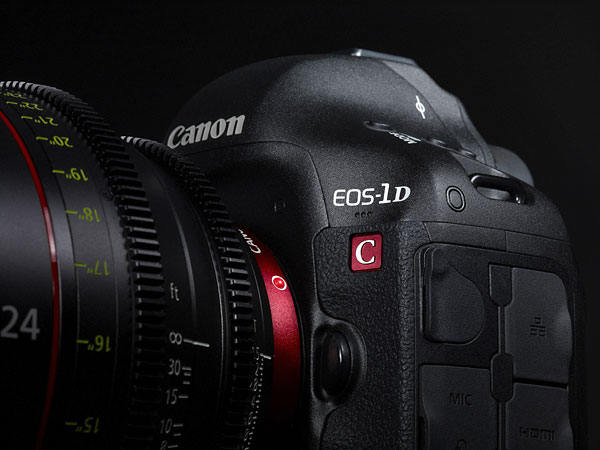
DE: Let’s talk briefly about 4K video. I’m not sure, actually I've said that after a slow start, 4K televisions are selling very strongly now, but I’m not entirely sure if it is really stronger or if that’s just wishful thinking by a lot TV makers. But nonetheless, Panasonic and Sony are offering multiple camera models even at fairly low consumer levels with 4K capability. Canon has been such a leader in high-definition video with your still cameras, why haven’t we seen 4K video in your mainstream consumer and pro still cameras? Is this something that you’ll address soon?
MM: Well, historically, I think that Canon was the first in the world to come out with a 4K product. In 2011, we had the Canon EOS 1D C, and then we had the Canon Cinema EOS C500 for professional use. For the consumer models, I think that we still need to work a little bit more on the balance between the cost and the sensor sensitivity before we can come out in the market. As you may know, Canon's main point of difficulty is to reduce costs.
[Ed. note: This is interesting, in that Canon views cost competitiveness as their main point of challenge in the market. It's also interesting in that it sounds like we won't see much in the way of 4K video in their SLR lineup for a little while yet.]
DE: Hmm. I see, interesting. Again, about 4K, but as regards it being used for still photography. Panasonic, in particular, has been promoting the idea of 4K Photo, which means using 4K video capture as an extension of still photography. It’s a way to capture exactly the right moment. Do you think this is the direction that we -- meaning the industry -- are heading towards overall, with the line between video and still capture gradually disappearing?
MM: I believe you are right here in that this is one direction which definitely will be taken. Among professional nature photographers who photograph animals, there are many right now that are capturing stills from the video, and that is already being done. Let me add something. One photographer actually taught me something when he showed me this animal photograph that he got as a cut-out from the 4K video. It was a squirrel. The squirrels, when they eat the nuts, what they do is they eat it and then they would spit out the casing or the skin. At that time, squirrels always close their eyes.
DE: When they spit out the skin, they’ll close their eyes. Really!
MM: I was actually shown proof of that through the picture.
DE: Wow, how interesting!
MM: Cut out from the 4K video, it’s very interesting.
DE: For those sorts of subjects, yes; you won't consistently see something like that, even with a very fast conventional continuous mode.
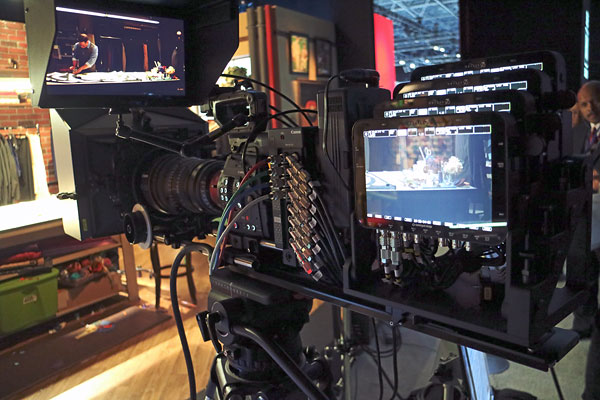
DE: I think in another interview you spoke about 8K video capture as the next logical step beyond 4K, and we’ve seen quite a bit of 8K video on the show floor. Will 8K ever be a technology for the consumer, or will it primarily and always be something used more by filmmakers?
MM: To be honest, taking into consideration the amount of data recorded with 8K, the major issue that needs to be overcome is how to deal with the amount of electricity consumption.
DE: Oh, power. Ah!
MM: That's why I think for the time being, it will only be for professional use.
DE: Because it needs to be a big camera with a power cable, hmm.
MM: But in the future we would like to work on adapting this for consumer use. If we create an 8K camera about this sized [guestures with his hands, indicating something the size of a small SLR], that means we also have to create a heating device to boil water. <laughter>
DE: Yes, right, a coffee warmer. Yes.
MM: Very convenient! <laughter>
DE: Yes! A convenient device! <laughs>
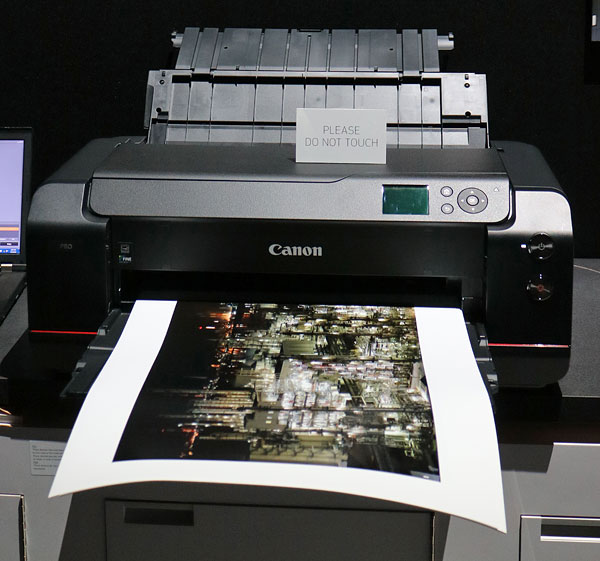
DE: Canon is a major printer manufacturer as well, and we've seen that in particular today. By the way, I have to say that was one of the most amazing things to me, is to see how far inkjet has come. We had been thinking that inkjet printing had more or less plateaued, you know, droplet sizes and that sort of thing --- and there didn’t seem to be a lot of change. Just recently, though, Epson announced their EcoTank printers with higher purchase prices for the printers, but very large ink tanks, a lot of ink included in the purchase, and very inexpensive refills. These seem like they could really shake up the market. End users have complained about expensive ink pretty much forever. What does Canon think of this development, and are there any plans to develop models with cheaper ink, but as similar business models? That is, make the razor more expensive, so the blades can be less so.
MM: I too wish that we could come out with cheaper ink. I’m not in charge of the inkjets, so I can’t give you much details on that. But one thing I can say is that in the future the camera group and the inkjet group will continue to work together, so that will be a C2C [Canon to Canon?] working together, and in the very near future I can promise that we will be able to come out with an image that will truly move and impress you.
DE: Hmm. Yes. Another promise!
MM: Did you see the large-format inkjet printers?
DE: Yes, yes. I saw all sizes, but there are the new red line models - I saw extremely fine detail on them.
MM: Yes. The red line is the same as lenses' red line.
DE: Yeah, it’s the L-series lenses, yeah.
[More interesting stuff here. Mr. Maeda didn't give any specifics, but as noted above, it seems clear Canon is going to announce new printers very soon, and his particular emphasis on Canon to Canon connectivity hints at some special relationship between Canon cameras and printers. I can say that some of the output I saw from the mysterious red-line printers on the show floor was pretty stunning in the level of detail displayed.]
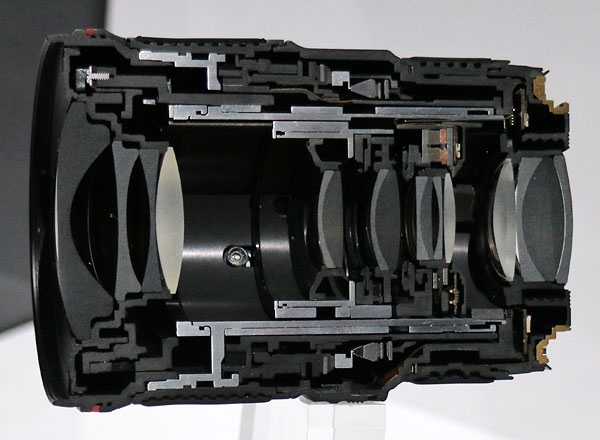
DE: I think we’re just about out of time but maybe I could ask just one more question, which has to do with what the future looks like for the camera market. As you’re obviously very well aware, camera sales -- even interchangeable-lens -- have decreased in recent years. And I think part of that is that the previous cameras are so good. Even though it’s five years old, the original 7D is still a great camera, so many owners don’t feel the need to upgrade. I suspect a lot of 7D owners are in fact upgrading, but it’s certainly true that we’re in an era where people are upgrading less frequently. What does the future look like? What do you see the typical upgrade cycle being long-term? And how does that compare with the cycle time three of four years ago?
MM: Well, I don’t have all of the detailed data, and so let me just give you my personal view on this question. For those users who have the interchangeable-lens DSLRs, the purchasing cycle, to start with, was not very short, so they would use the same camera for several years. So this would also cover your next question as well. <laughter> In terms of the camera model change cycle, I think that would differ based on the characteristics of each camera. So in terms of our high-end cameras, we will do our model change when we are able to embed the functionality and performance that we are aiming for. For entry level models, of course we will do the model change when we come out with new features or new performance. But at the same time, for the entry level models there is a lot of competition, and so we also have to work on cost reductions. Once we are able to do these cost reductions, that would be another opportunity for model change.
DE: Yes.
MM: In addition, in terms of how often the cameras are replaced, for those users who use the high-end upper class models, they have a good understanding of what the performance is like or what the features are, and so if there is a new feature added or better performance, then that would motivate them to replace their camera. Compared to that, in the Rebel class, it’s not that much replacement demand, but rather that overall volume is increasing.
DE: Ah, so the low end market isn't so much about ongoing upgrades as it is about bringing new users into the interchangeable-lens fold. Well, I see that I’ve used up more than my time, and apologize for that. Thank you very much, not only for your time, but for your very frank answers.
IR Summary
There's quite a bit in my interview, so its perhaps worthy of a quick summation. Here are what I feel to be the main bullet-points:
-
Canon's R&D budget for cameras and lenses hasn't been hurt by investments in other areas; funding has been level to slightly up recently
-
Canon isn't ceding the mirrorless market; on the contrary, they appear to be working on an enthusiast-grade EOS-M model
-
You can expect more EF-M lenses, as well
-
There's more love coming to Canon's APS-C lens lineup, too; they've been working top-down, and it's APS-C's time now
-
Don't expect 4K in consumer SLRs and other cameras soon; they have cost battles to fight first
-
It'll be a long time before 8K ever comes to consumer or even handheld cameras
-
Canon is moving to on-sensor A/D conversion across the board (we expect to see improved dynamic range as a result)
-
Canon DSLRs aren't necessarily constrained to use Canon sensors; we could see chips from other manufacturers at some point
-
Look for a new line of high-end inkjet printers from Canon very soon. No specifics were given, but it's worth noting that there's a photography show (Photo Plus Expo) coming up in the third week of October. Hmm...
-
Look for some form of increased integration between Canon printers and Canon cameras in particular
-
It doesn't sound like Canon will be following Epson's lead with pricier printers but cheaper ink
• • •
Canon’s incredible Expo 2015
Amazing technology, but where’s photography going?

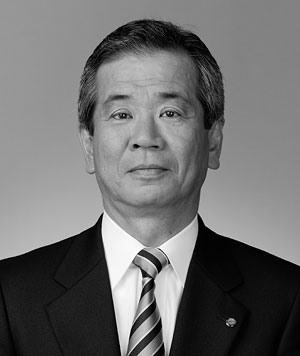
Senior Managing Director, Chief Executive
Image Communication Products Operations Canon Inc.
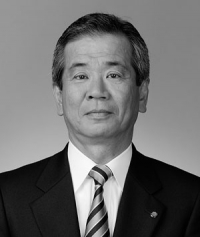
Senior Managing Director, Chief Executive Image Communication Products Operations Canon Inc.
